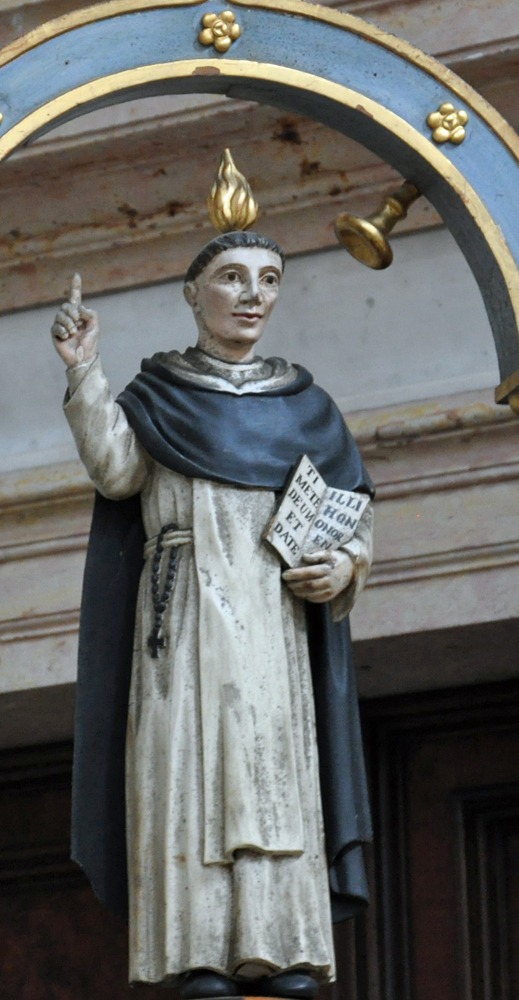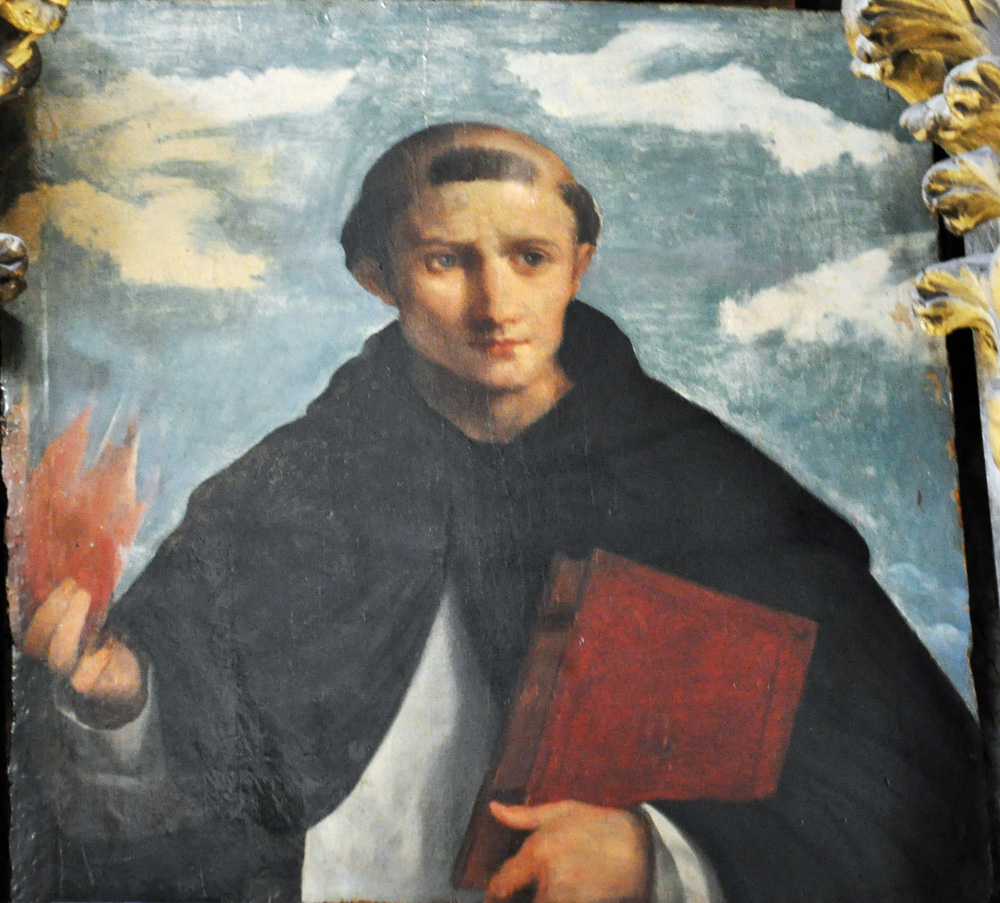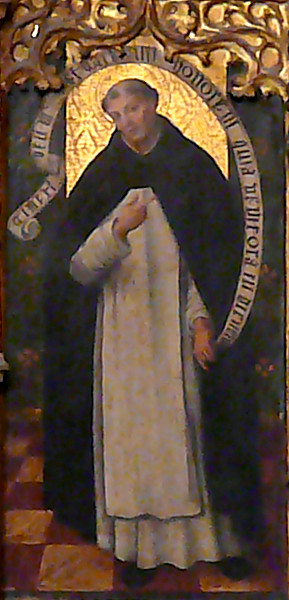In Revelation verse 14:7 is spoken by an angel "having the eternal gospel, to preach unto them that sit upon the earth, and over every nation, and tribe, and tongue, and people." Because he did indeed preach in different languages with great success to Moslems, Jews, and Christians, the saint is sometimes identified with that angel and given a pair of wings (example).2
Alternatively, his preaching can be represented simply by putting him in a pulpit. Tiepolo's Preaching of St.Vincent Ferrer sets the pulpit outdoors, referring to the many times when the crowd was too big for a church.3.
There are many variations on these attributes. In the second picture at right, the flame is on the saint's hand and the book is closed. In a statue in Sicily he points to the open book rather than to Heaven. In the third picture at right the book is replaced by a long banderole with the verse from Revelation.
A somewhat rarer attribute is a mitre at the saint's feet (example). At one point the Avignon Pope Benedict XIII offered to make him a bishop and cardinal, but he declined. The refusal may be due to his eagerness to persuade Benedict to resign and help resolve the Great Western Schism.4
An extraordinary number of miracles have been claimed for St. Vincent Ferrer, most of them involving the cure or even resurrection of children, paralytics, and others. Many artists have painted images of these miracles, but it is difficult to tell exactly which painting goes with which one of the hundreds of miracles listed in the Acta Sanctorum. The most one can say is that if you see a picture of a Dominican praying over or reaching out to a sick or dead person, he is probably Vincent Ferrer.
Prepared in 2015 by Richard Stracke, Emeritus Professor of English, Augusta University. Revised 2017-01-16.

Statue in the Gesuati, Venice (See description page)

Palma il Vecchio, 1523 (See description page)

Altarpiece panel, 16th century (See description page)
MORE IMAGES
- 15th century: Ercole de' Roberti, Miracles of St. Vincent Ferrer.
- 16th century: A fresco in an Italian church.
- Early 18th century: Pier Dandini, St. Vincent Ferrer Resuscitates a Man in Salamanca.
- 1738: Painting by Giambattista Piazzetta of St. Vincent Ferrer with Saints Hyacinth and Louis Bertrand.
- Undated: Statue of St. Vincent Ferrer in Vicenza, Italy.
NAMES
- Also known as St. Vincent of Valencia
DATES
- Feast day: April 5
- Lived 1350-1419
BIOGRAPHY
- Peter Ranzano's Vita is in the Acta Sanctorum, April vol. 1, 482-52.
- See the Acta Sanctorum, April vol. 1, for Latin texts on the miracles of St. Vincent by Francisco Castiglione (512-514) and Bernard Guyard (514-523).
- Some of the miracles are recounted in the English translation of Ferrer's canonization documents, Head, 785-803.
- A brief summary in English based on the Acta Sanctorum's pages on St. Vincent is in Butler, II, 31-36.
NOTES
1 Ranzano, Acta Sanctorum, April vol. 1, 492.
2 Ibid., 495-96 et passim.
3 Farmer, 438.
4 Ranzano, ibid., 492.